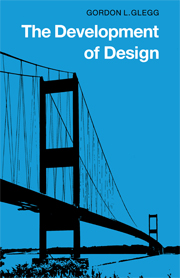4 - The basic idea — competitive research
Published online by Cambridge University Press: 07 September 2010
Summary
This method of research provides unrestricted efficiency over a restricted area of application. The essence of all competitions is that they should be fair, with no bias in favour of a particular entrant. A game of tennis is basically fair, for the players hit over a common net, all balls are identical and any effects of the weather cancel out because the players change ends periodically. The words ‘common’, ‘identical’ and ‘cancel’ are the vital ones in a tennis tournament and also in the competitive method of research. Its great asset is the self-evident nature of its results. It is the shoppers' technique. ‘Let's choose this drawing-room suite, it's more comfortable than the other one.’ ‘Your new train suspension,’ says the small boy, ‘makes me feel even worse than the old one.’
This win-or-lose verdict is only a valid one if it is largely or entirely an objective one. The little boy's judgement may have been biased because he had just golloped three ice-lollies. The sofa seems the most comfortable because you are worn out from shopping and the softer and sloppier the springing the better you feel at the moment. And so we must add ‘non-subjective’ to the words ‘common’, ‘identical’ and ‘cancel’. The usefulness of the technique lies in its problem.
Asked to advise on the design of concrete motorways and air-field runways suitable for high local loads, I was appalled at the number of variables that were all clamouring for a place in my research.
- Type
- Chapter
- Information
- The Development of Design , pp. 41 - 45Publisher: Cambridge University PressPrint publication year: 1981

